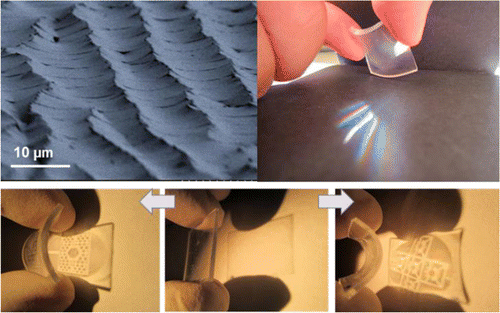J. Parra-Barranco, M. Oliva-Ramírez, L. González-García, M. Alcaire, M. Macias-Montero, A. Borrás, F. Frutos, A.R. González-Elipe, A. Barranco
ACS Applied Materials and Interfaces, 6 (2014) 11924
doi: 10.1021/am5037687

We present a straightforward procedure of self-surface patterning with potential applications as large area gratings, invisible labeling, optomechanical transducers, or smart windows. The methodology is based in the formation of parallel micrometric crack patterns when polydimethylsiloxane foils coated with tilted nanocolumnar SiO2 thin films are manually bent. The SiO2 thin films are grown by glancing angle deposition at room temperature. The results indicate that crack spacing is controlled by the film nanostructure independently of the film thickness and bending curvature. They also show that the in-plane microstructural anisotropy of the SiO2 films due to column association perpendicular to the growth direction determines the anisotropic formation of parallel cracks along two main axes. These self-organized patterned foils are completely transparent and work as customized reversible diffraction gratings under mechanical activation.

